Housing Strategy and Corporate Sustainability Service, Place, North Ayrshire Council, Cunninghame House, Irvine, KA12 8EE.
Introduction
This Local Biodiversity Action Plan is intended for anyone who lives in, works in or visits North Ayrshire. We are all stakeholders in our shared local and global biodiversity.
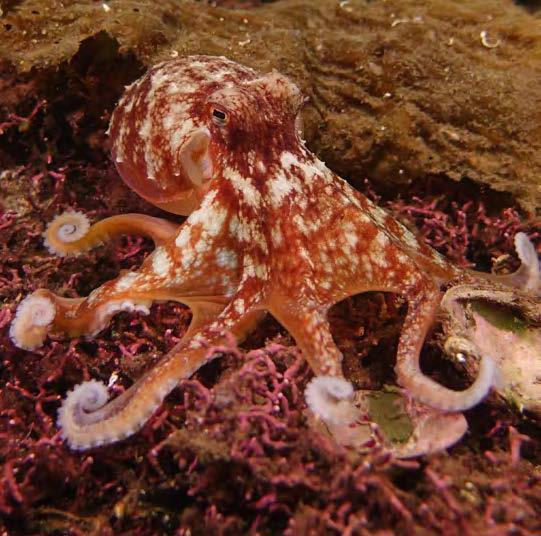
This rich variety of life is essential for sustaining the ecosystems that provide us with food, fuel, health, wealth and other vital services. The term used to describe the benefits that we receive, many times unknowingly, from the environment we live in is ecosystem services. All life on earth, including our economy, is linked to ecosystem services in numerous ways but it is difficult to place an economic value on them (known as 'natural capital') and they largely go unnoticed. These include soil formation, nutrient and water cycling, photosynthesis, fresh water, food, fuel, timber, fibre, and pharmaceuticals, flood management, pollination, carbon sequestration, erosion reduction, regulation of regional and local climate, air purification, water filtration, pest control, as well as the non-material benefits we obtain from the environment such as recreation, tourism and improved health and well-being through the fulfilment that nature experiences can bring.
In order to protect the well-being of present and future generations we must give special consideration to what might be irreversible changes to our environment. In short, we need to carefully evaluate the decisions we take every day and take a precautionary approach to avoid loss and damage.
Whilst we rely on biodiversity, human actions have a wide range of impacts on the natural world. Key pressures on biodiversity include pollution; land use intensification and modification; the spread of invasive species and wildlife disease; a lack of connection to nature and consequent undervaluing of its benefits; climate change and exploitation of marine and coastal environments.
The cumulative impacts of these key pressures are having a profound effect on biodiversity. Losses of local populations of species can lead to extinction of species locally, nationally and globally. Global species extinctions are occurring at 50 to 100 times the natural rate and are predicted to rise dramatically. The national situation also calls for action. In a 2016 study of 218 countries assessed for the intactness of their biodiversity, the UK ranked 189th, indicating that nature is faring worse in the UK than in most other countries.
Recognising that the natural environment faces many threats, the UK Government in 1992 signed the Convention on Biological Diversity at the Earth Summit in Rio. As a result, we are committed to developing national strategies, plans and programmes for the conservation and sustainable use of biological diversity. Despite the international target to halt the loss of biodiversity by 2010, declines continue. To tackle this, we must plan for the protection and rehabilitation of our ecosystems. To do so, we need to take an ecosystems approach, defined by the UN Convention on Biological Diversity as a 'strategy for the integrated management of land, water and living resources that promotes conservation and sustainable use in an equitable way'.
Successful management of ecosystems relies on the conservation of their living and non-living components. This is recognised in the Scottish Biodiversity List which lists the animals, plants and habitats considered by Scottish Ministers to be of highest priority for biodiversity conservation in Scotland.
North Ayrshire’s variety of rocks, fossils, landforms and soils (known as geodiversity) are also a finite resource which form a vital component of our ecosystems. In North Ayrshire we are equally concerned with the local loss of species, reduction in populations of species and loss of quality or functioning of habitats and ecosystems. Such changes are not only of concern in terms of wildlife itself but because of the disadvantages to North Ayrshire of its natural heritage becoming impoverished, with resulting loss of ecosystem services and quality of environment for its residents.
Since 1992, the Convention on Biological Diversity has formed the basis for national strategies to address biodiversity loss. Biodiversity – the UK Action Plan was published in 1994. In 2004 the Scottish Biodiversity Strategy was adopted, with the publication of ‘Scotland’s Biodiversity: It’s in Your Hands’. This was supplemented by the ‘2020 Challenge for Scotland’s Biodiversity’ (2013) as part 2 of the Scottish Biodiversity Strategy, followed by its implementation document ‘Scotland’s Biodiversity: A Route Map to 2020’ in 2015. Another key driver of biodiversity action in Scotland has been the biodiversity duty. The Nature Conservation (Scotland) Act 2004 places a statutory duty on all public bodies to further the conservation of biodiversity. Section 1 of the Act states:
Quote: It is the duty of every public body and office-holder, in exercising any functions, to further the conservation of biodiversity so far as is consistent with the proper exercise of those functions.
Quote from: Nature Conservation (Scotland) Act 2004
‘Public body or office-holder’ refers to 'a statutory undertaker and any person exercising functions of a public nature'. Additionally, the Wildlife and Natural Environment (Scotland) Act 2011 requires all public bodies to make a report publicly available on their compliance with the biodiversity duty every three years.
This is the fifth Local Biodiversity Action Plan to include North Ayrshire, and the second to exclusively cover North Ayrshire. It has been structured to align with the Scottish Biodiversity Strategy and in turn with the Biodiversity Duty Report template produced by Scottish Natural Heritage, such that the Vision, Central Aims and Work Programme are all compatible with these national documents to facilitate focused, easily demonstrated success.
The guidance document 'LBAPs in Scotland – The Manual' (1997) has been used to ensure that this Local Biodiversity Action Plan forms the basis of a functioning LBAP process. This document covers a period of 12 years to enable short, mid and long-term projects to be planned, fundraising to be carried out and relevant legacy work to be factored within the lifespan of the document. The 12-year period has been divided into 3-year reporting quarters to ensure that progress towards milestones is monitored and work programmes adjusted as required to ensure tasks are achieved within the life of the plan.
NALBAP 2019 to 2031 will be a rolling document maintained as an online resource which will be shaped by input from local stakeholders during its implementation period. As recommended by the original LBAP guidance ‘Local Biodiversity Action Plans – A Manual’ (1997), a ‘twin-tracking approach’ has been adopted in which a biodiversity audit has been recommended, with interim actions adopted in the meantime.
The establishment of a Local Environmental Records Centre (LERC) covering North Ayrshire (provided by South and West Scotland Environmental Information Centre) was a key success of the previous LBAP. This is an essential resource underpinning all aspects of NALBAP 2019 to 2031 for prioritising LBAP work, monitoring its impact, and assessing whether priorities need to change over time. Sustaining our LERXC in the long term is therefore central to the success of NALBP 2019 to 2031.
Development, management and implementation of this Local Biodiversity Action Plan will be carried out by the North Ayrshire Biodiversity Partnership (NABP), which intends to bring a wide range of biodiversity stakeholders together to work towards shared objectives and to agree priorities for the limited resources. The Partnership recognises that these individuals and organisations have different roles and responsibilities but believes that they can easily have a shared agenda and a common approach.
The overall aim for the partnership is:
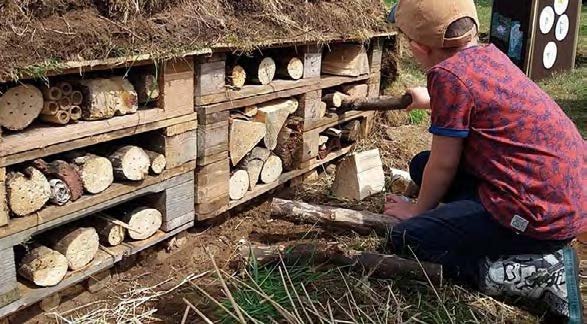
The work of the partnership and co-ordination of NALBAL 2019 to 2031 is overseen by a small management group, with a wider network of NABP partners contributing to the implementation of LBAP project work as appropriate.
A work programme for 2019 to 2031 has been developed to achieve the 2030 vision and central aims. It comprises six workstreams, each addressing one of the six points of the 2030 vision.
The essence of the NALBAP 2019 to 2031 can be expressed as three central aims, based on those of the Scottish Biodiversity Strategy '2020 Challenge for Scotland's Biodiversity' (2013):
- Protect - protect and restore biodiversity on land and seas, and to support healthier ecosystems.
- Connect - connect people with the natural world, for their health and wellbeing and to involve them more in decisions about their environment.
- Maximise - maximise the benefits for North Ayrshire of a diverse natural environment and the services it provides, contributing to sustainable economic growth.
Within these workstreams, theme subsections address key biodiversity topics. Biodiversity action within the workstreams and themes has been divided into defined tasks.
A biodiversity audit will be carried out to create an itinerary of North Ayrshire’s biodiversity resource and how it is faring. This will allow future biodiversity work to be prioritised based on the local context of ecosystems, habitats and species and to target the key pressures impacting upon these.
The information gathered by the biodiversity audit process will be maintained by South and West Scotland Environmental Information Centre and regularly updated as a live resource, allowing progress and impact of NALBAP 2019 to 2031 tasks to be monitored, and informing changes in priorities over time. The work programme is therefore composed of interim tasks, selected from a long-list by North Ayrshire Biodiversity Partnership, which will be carried out whilst the biodiversity audit is being undertaken. Input from a wider range of stakeholders will be sought following publication of NALBAP 2019 to 2031 to ensure that key issues affecting locally valued biodiversity are addressed.
The combination of a structured set of interim tasks based on national strategy and partner input, followed by prioritisation of tasks determined by an objective biodiversity audit and local input, will provide the basis for addressing the key issues for North Ayrshire’s biodiversity over the next 12 years.
Through the implementation of NALBAP 2019 to 2031, North Ayrshire Biodiversity Partnership will work towards the following vision for North Ayrshire’s biodiversity, based on the Six Big Steps for Nature set out in ‘Scotland’s Biodiversity: A Route Map to 2020 (2015)’:
01 Ecosystem restoration
Historical losses of habitats and ecosystems have been reversed, to meet the Aichi target of restoring 15% of degraded ecosystems.
02 Investment in natural capital
The benefits which nature provides are better understood and appreciated, leading to better management of our renewable and non-renewable natural assets.
03 Quality greenspace for health and education benefits
The majority of people derive increased benefits from contact with nature where they live and work.
04 Conserving wildlife in Scotland
The future of priority habitats and species has been secured.
05 Sustainable management of land and freshwater
Environmental, social and economic elements are well balanced. 06 Sustainable management of marine and coastal ecosystems A healthy balance has been achieved between environmental, social and economic elements.
North Ayrshire Biodiversity Partnership
North Ayrshire’s biodiversity relies on everyone whose activity either directly impacts on the natural environment or influences the attitudes and understanding of those who do.
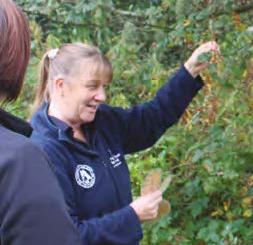
Successful conservation of North Ayrshire’s biodiversity must therefore involve a variety of stakeholders including government and statutory agencies, local authorities, farmers and landowners, voluntary conservation organisations, businesses, educators and local communities.
The North Ayrshire Biodiversity Partnership (NABP) intends to bring all these sectors together to work towards shared objectives and to agree priorities for the limited resources. The partnership recognises that these individuals and organisations have different roles and responsibilities but believes that they can easily have a shared agenda and a common approach. The overall aim for the partnership is ‘to support, encourage and positively influence the conservation and enhancement of biological diversity in North Ayrshire as part of the Scottish Biodiversity Strategy.’
Membership of the partnership is informal, broad and inclusive and involves a wide range of relevant public and voluntary sector bodies. Currently partnership organisations have a focus on nature conservation and the environment, although the partnership aims to reach beyond these sectors to maximise the opportunities available for biodiversity awareness and action. Lead players in the partnership during the preparation of this plan included North Ayrshire Council, particularly Corporate Sustainability, Planning, Streetscene and Ranger Services; South and West Scotland Environmental Information Centre (SWSEIC); Scottish Natural Heritage (SNH); Scottish Wildlife Trust (SWT); Community of Arran Seabed Trust (COAST); and the Royal Society for the Protection of Birds Scotland (RSPB).
The work of the Partnership and coordination of NALBAP 2019 is overseen by a small Management Group which manages the business of the NABP Partnership.
A wider network of NABP partners contributes to the implementation of LBAP project work as appropriate.
The following North Ayrshire Biodiversity Partnership partners endorse the current North Ayrshire Local Biodiversity Action Plan 2019 to 2031 document and where possible will contribute to developing and actively implementing the plan over its 12-year period:
- Clyde Porpoise Community Interest Company
- Community of Arran Seabed Trust (COAST)
- North Ayrshire Council
- Royal Society for the Protection of Birds Scotland (RSPB)
- Scotland's Agricultural College (SRUC)
- Scottish Wildlife Trust (SWT)
- South and West Scotland Environmental Information Centre (SWSEIC)
Acknowledgements
Local Biodiversity Action Plans (LBAPs) are made possible by a diverse and wide community of people past, present and future, who actively care about our natural environment.
The North Ayrshire Biodiversity Partnership would like to thank all who have contributed directly or indirectly to this action plan.
Special thanks go to the following individuals and organisations for their contributions:
Naturalists
Both amateur and professional, who have contributed their time and skills to understanding and conserving our biodiversity locally, nationally and globally.
North Ayrshire Biodiversity Partnership
with direct input received gratefully from the following partners:
- Scottish Natural Heritage
- Ardeer FRIENDS Group
- South and West Scotland Environmental Information Centre
- Scottish Natural Heritage
- Scottish Wildlife Trust
Evaluation of tasks within the LBAP will be key to its success, ensuring that it responds to the dynamic nature of the field of biodiversity conservation and to build on successful project work. This will only be possible through the continued commitment of North Ayrshire’s strong network of biodiversity stakeholders. Thank you in advance to those who are currently part of this positive force for biodiversity, as well as those newcomers who will become actively engaged over the coming months and years through the action plan.
Who is this document for?
This Local Biodiversity Action Plan is intended for anyone who lives in, works in or visits North Ayrshire. We are all stakeholders in our shared local and global biodiversity.
So whether your interest in biodiversity is personal or professional (or both), this plan will point you in the right direction to begin:
- learning more about biodiversity
- experiencing biodiversity for yourself
- taking positive action to conserve and enhance biodiversity in North Ayrshire.
Depending on how you decide to get involved, your actions could benefit wildlife, habitats and people around the globe.
So please read on to learn about the fascinating and useful biodiversity we have, the issues facing biodiversity and what can be done to help.
If you are unfamiliar with any terms, use the 'Quick guide to terms used in this document' and 'List of abbreviations' sections which can be found towards the end of this document.
If you would like to find out more about biodiversity or get involved in work within this plan, please:
- email: biodiversity@north-ayrshire.gov.uk
- telephone: 01294 310000
Please ask to speak to the relevant member of staff about the North Ayrshire Local Biodiversity Action Plan 2019 to 2031.
Biodiversity
What is biodiversity?
Biodiversity is a shortened term for ‘biological diversity’, meaning the richness and variety of all life on Earth.
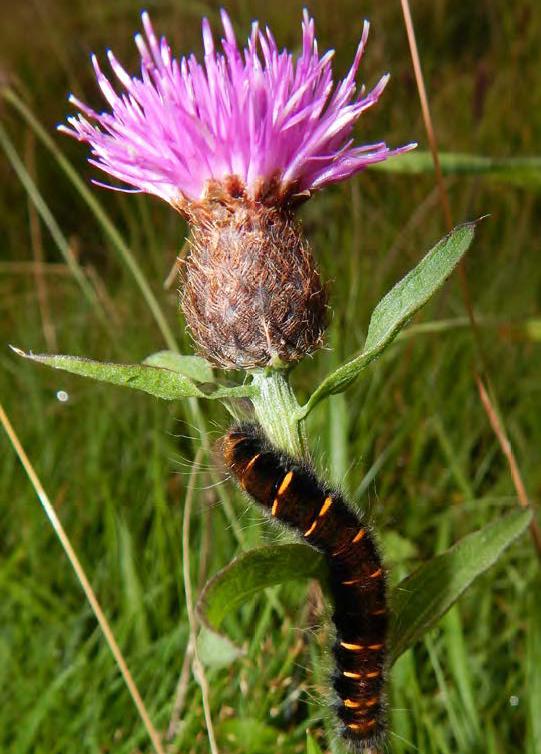
It includes the fascinating diversity of species inhabiting in any given area. Globally over 1.75 million species are known to science, but this does not give the true total as more are discovered or described each year. Scientists estimate that the total number of species on Earth may range from 3 million to 100 million. Even a busy urban greenspace which may seem too disturbed by people for secretive wildlife may support many species – both native and introduced.
It also includes the variety of habitats in a given area such as a section of our coastline which may contain seagrass beds, intertidal mudflats, coastal salt marsh, sand dune, rocky estuary and river, as well as farmland habitat features such as arable field margins and hedgerows.
Lastly, biodiversity includes the complexity of ecosystems (or natural living systems), formed by the different ways that living things interact with each other and with the living and non-living aspects of their habitats.
Why is Biodiversity important?
Biodiversity has intrinsic worth, which is separate from any benefits humans may gain from it. The biodiversity we see today is a fascinating aspect of our planet which has evolved over 3.5 billion years – much longer than humans have existed as a species.
It is important to stress that humans are part of biodiversity and live within ecosystems – we are just one species of many, and we are entirely reliant on our natural environment for every aspect of our life. The rich variety of life is essential for sustaining the ecosystems that provide us with food, fuel, health, wealth and other vital services – it is as simple as the air you breathe, the water you drink and the food you eat.
In order to protect the wellbeing of present and future generations we must give special consideration to what might be irreversible changes to our environment.
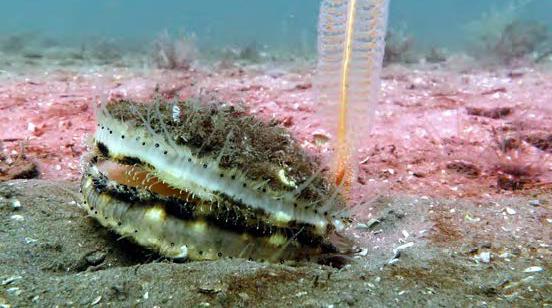
The term used to describe the benefits that we receive, many times unknowingly, from the environment we live in is 'ecosystem services'. All life on earth, including our economy, is linked to ecosystem services in numerous ways but it is difficult to place an economic value on them (known as 'natural capital') and they largely go unnoticed. For example, healthy ecosystems provide free 'services' to human communities:
Supporting Services are the services necessary for the production of all other ecosystem services and include soil formation, nutrient and water cycling and photosynthesis.
Provisioning Services are the products we obtain from the environment such as fresh water, food, fuel, timber, fibre, and pharmaceuticals.
Regulating Services are the benefits obtained from natural processes such as flood management, pollination, carbon sequestration, erosion reduction, regulation of regional and local climate, air purification, water filtration and pest control.
Cultural Services include the non-material benefits we obtain from the environment such as recreation, tourism and improved health and well-being through the fulfilment that nature experiences can bring.
Some of the ways in which the health of our ecosystems affects our quality of life and the way North Ayrshire functions can be ably demonstrated by the following:
- habitat and landscape resource – glens provide freshwater; peatlands provide carbon storage; floodplains dissipate flood water, hills provide places for recreation, tourism and mental and spiritual well-being; farmland provides food production; trees and woodland provide building materials, shelter, carbon storage, air purification, protection against river erosion and wood fuel
- pollination – most flowering plants including many crops (including fruit, beans and peas) need help from insect pollinators such as bees, beetles, moths, wasps, flies and butterflies to reproduce
- water purification – streams, wetlands, lochs, estuaries and forests all play an important role in purifying water, providing clean water for drinking, industrial uses, recreation and wildlife habitat
Maintaining the processes and inter-relationships within ecosystems is vital for ensuring that we have healthy species and habitats and is also important for ensuring the on-going availability and benefits of “ecosystem services” to human life. Whilst our understanding of the complex, dynamic functioning of ecosystems will always be limited, our challenge is to find an ecologically sustainable way of living in the world, particularly with an ever-increasing human world population sharing the Earth’s natural resources.
In order to protect the well-being of present and future generations we must give special consideration to what might be irreversible changes to our environment. In short we need to carefully evaluate the decisions we take every day and take a precautionary approach to avoid loss and damage.
What are the key pressures impacting biodiversity?
Whilst we rely on biodiversity, human actions have a wide range of impacts on the natural world. Key pressures on biodiversity include:
Pollution from industry, agriculture and road traffic has impacts on waterways, uplands, air quality and sensitive habitats.
Land use intensification and modification leads to a reduction of diversity, quality and connectivity of landscapes and habitats. Causes include increased grazing pressure and forestry across the uplands, and agricultural intensification and housing development in the lowlands.
Spread of invasive species and wildlife disease which has arisen from a growing global trade of plants and animals, with marine and terrestrial recreation also playing a role.
Lack of recognition for the value of nature as the vital benefits (i.e. the ecosystem services) that healthy stocks of nature (natural capital) provide to society are not fully recognised or appreciated and therefore are not sufficiently considered in decision making.
Disconnection with nature as nature may seem remote from the everyday lives of many people in society, leading people to undervalue its contribution to their well-being and prosperity, and to wider society.
Climate change is causing a shift in weather patterns which are affecting nature across Scotland. In the seas warming, acidification and sea level rise are becoming evident, and wetter conditions on land, especially in the west are predicted.
Marine and coastal exploitation with a range of sectors operating in the marine environment having profoundly changed the abundance and resilience of some species and altered marine habitats.
What effects are these pressures having on biodiversity as a whole?
The cumulative impacts of these key pressures are having a profound effect on biodiversity. Losses of local populations of species can lead to extinction of species locally, nationally and globally. Whilst extinction was occurring long before humans began putting pressure on biodiversity, the rate at which it is happening due to human activity is now causing concern, with global species extinctions occurring at 50 to 100 times the natural rate and predicted to rise dramatically. The national situation also calls for action. In a 2016 study of 218 countries assessed for the intactness of their biodiversity, the UK ranked 189th, indicating that nature is faring worse in the UK than in most other countries.
We recognise that we too are at risk if we allow this to continue. As human development has rapidly increased over the past 200 years, we have exploited natural resources and fragile ecosystems, damaging the ability of ecosystems to self-sustain.
Recognising that the natural environment faces many threats, the UK Government in 1992 signed the Convention on Biological Diversity at the Earth Summit in Rio. As a result, we are committed to developing national strategies, plans and programmes for the conservation and sustainable use of biological diversity. Despite the international target to halt loss of biodiversity by 2010, declines continue. To tackle this, we must plan for the protection and rehabilitation of our ecosystems. To do so, we need to take an 'ecosystems approach'. Such an approach is a 'strategy for the integrated management of land, water and living resources that promotes conservation and sustainable use in an equitable way' (UN Convention on Biological Diversity 2000).'
Successful management of ecosystems relies on the conservation of their living and non-living components. This is recognised in the Scottish Biodiversity List which lists the animals, plants and habitats considered by Scottish Ministers to be of highest priority for biodiversity conservation in Scotland. North Ayrshire’s variety of rocks, fossils, landforms and soils (known as geodiversity) are also a finite resource which form a vital component of our ecosystems. In North Ayrshire we are equally concerned with the local loss of species, reduction in populations of species and loss of quality or functionality of habitats. Such changes are not only of concern in terms of wildlife itself but because of the disadvantages to North Ayrshire of its natural heritage becoming impoverished, with resulting loss of ecosystem services and quality of environment for its residents. The protection of biodiversity and ecosystems is therefore very high on our list of priorities and this LBAP is our key strategy for conserving and enhancing North Ayrshire’s biodiversity locally, with the potential to benefit biodiversity further afield.
International to local
Key policy and statutory drivers for biodiversity action
This edition of North Ayrshire’s LBAP aims to align local biodiversity policies and action with both national and international strategic policy and legislation. The timeline below shows the key biodiversity strategy documents which connect local biodiversity conservation to coordinated national and international efforts.
1992
United Nations Rio Summit and Convention on Biological Diversity.
1994
Biodiversity - the UK Action Plan (UKBAP)
1998
European Community Biodiversity Strategy
2004
Scotland’s Biodiversity: It’s in your hands. A Strategy for the Conservation and Enhancement of Biodiversity in Scotland Nature Conservation (Scotland) Act 2004.
2010
Convention on Biological Diversity Strategic Plan for Biodiversity 2011 to 2020.
2011
Our Life Insurance, Our Natural Capital: An EU Biodiversity Strategy to 2020.
Wildlife and Natural Environment (Scotland) Act 2011.
2012
UK Post-2010 Biodiversity Framework
2013
2020 Challenge for Scotland’s Biodiversity
2015
Scotland’s Biodiversity: A route map to 2020
It was signed by 150 world leaders at the 1992 Conference on Environment and Development, Rio de Janeiro (informally known as the ‘Earth Summit’) and has since formed the basis for national strategies to address biodiversity loss. The CBD’s governing body is the Conference of the Parties (COP) which meets every 2 years to review progress, set priorities and commit to work plans.
In 1994 the UK became the first country to produce a national biodiversity action plan. The European Biodiversity Strategy followed in 1998, with the aim of addressing biodiversity losses which were identified as a threat to sustainable livelihoods across the European Union.
Part 1 of the Scottish Biodiversity Strategy was adopted in 2004, with the publication of ‘Scotland’s Biodiversity: It’s in Your Hands’. It set out Scotland’s approach to biodiversity conservation, providing a vision for 2030: 'Scotland is recognised as a world leader in biodiversity conservation. Everyone is involved: everyone benefits. The nation is enriched'.
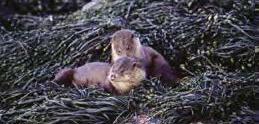
The United Nations Convention on Biological Diversity ‘Strategic Plan for Biodiversity 2011 to 2020’ adopted an ecosystems approach to the sustainable management of biodiversity. This was reflected in ‘Our Life Insurance, Our Natural Capital: An EU Biodiversity Strategy to 2020’. This document sets out how the EU will meet its obligations under the International Strategic Plan. It contains a target of 'halting the loss of biodiversity and the degradation of ecosystem services in the EU by 2020, and restoring them in so far as feasible, while stepping up the EU contribution to averting global biodiversity loss'.
The UK Post-2010 Biodiversity Framework forms part of a national and international programme designed to maintain and enhance biodiversity globally. It includes several specific plans for species and habitats afforded priority conservation action. Local Biodiversity Action Plans are the means by which the national strategy can be delivered through local actions.
The Scottish Biodiversity Strategy was supplemented by the ‘2020 Challenge for Scotland’s Biodiversity’ in 2013, which sets out the major steps needed to improve the state of nature in Scotland and reflects the wider shift towards the ecosystem approach. It focusses on desired outcomes for 2020 and is a response to the targets set by the UN Convention on Biological Diversity 2010 and the EU’s Biodiversity Strategy for 2020 (2011). These call for a step change in efforts to halt the loss of biodiversity and to restore the essential services that a healthy natural environment provides. In addition, investment in the natural assets of Scotland will contribute to sustainable economic growth and support wellbeing and wealth creation. The 2020 Challenge aims to:
- protect and restore biodiversity on land and seas, and to support healthier ecosystems
- connect people with the natural world, for their health and well-being and to involve them more in decisions about their environment
- maximise the benefits for Scotland of a diverse natural environment and the services it provides, contributing to sustainable economic growth
Seven outcomes are identified within the 2020 Challenge:
- Scotland’s ecosystems are restored to good ecological growth so that they provide robust ecosystem services and build natural capital
- natural resources contribute to stronger sustainable economic growth in Scotland and we increase our natural capital to pass on to the next generation
- improve health and quality of life for the people of Scotland through investment in the care of greenspace, nature and landscapes
- the special value and the international importance of Scotland’s nature and geodiversity is assured, wildlife is faring well, and we have a highly effective network of protected places
- nature is faring well, and ecosystems are resilient as a result of sustainable land and water management
- Scotland’s marine and coastal environments are clean, healthy, safe, productive and biologically diverse, meeting the long-term needs of people and nature
- a framework of indicators that we can use to track progress
Through the implementation of NALBAP 2019 to 2031, North Ayrshire Biodiversity Partnership will work towards the following vision for North Ayrshire’s biodiversity, based on the Six Big Steps for Nature set out in ‘Scotland’s Biodiversity: A Route Map to 2020 (2015)’:
01 Ecosystem restoration
Historical losses of habitats and ecosystems have been reversed, to meet the Aichi target of restoring 15% of degraded ecosystems.
02 Investment in natural capital
The benefits which nature provides are better understood and appreciated, leading to better management of our renewable and non-renewable natural assets.
03 Quality greenspace for health and education benefits
The majority of people derive increased benefits from contact with nature where they live and work.
04 Conserving wildlife in Scotland
The future of priority habitats and species has been secured.
05 Sustainable management of land and freshwater
Environmental, social and economic elements are well balanced.
06 Sustainable management of marine and coastal ecosystems
A healthy balance has been achieved between environmental, social and economic elements.
A key statutory driver of biodiversity action in Scotland has been the biodiversity duty. The Nature Conservation (Scotland) Act 2004 places a statutory duty on all public bodies to further the conservation of biodiversity and have regard to the Scottish Biodiversity Strategy and the Convention on Biological Diversity. Section 1 of the Act states:
Quote: It is the duty of every public body and office-holder, in exercising any functions, to further the conservation of biodiversity so far as is consistent with the proper exercise of those functions.
Quote from: The Nature Conservation (Scotland) Act 2004
‘Public body or office-holder’ refers to 'a statutory undertaker and any person exercising functions of a public nature'. Additionally, the Wildlife and Natural Environment (Scotland) Act 2011 requires all public bodies to make a report publicly available on their compliance with biodiversity duty every three years. The creation and implementation of NALBAP 2019 to 2031 contributes to North Ayrshire Council’s fulfilment of its biodiversity duty and reporting on the biodiversity duty will be based on the progress reports produced at the end of each 3 year LBAP quarter as part of the LBAP monitoring system, enabling both functions to be satisfied by a single document.
A timeline of action for North Ayrshire's biodiversity
NALBAP 2019 to 2031 is the fourth LBAP document covering North Ayrshire. A brief timeline of the previous documents highlights the changing focus of LBAPs over the years: Ayrshire LBAP 2001-2005 Ayrshire’s first LBAP provided a major assessment of Ayrshire’s biodiversity and was a valuable tool for prioritising conservation efforts, focusing on 26 habitat action plans and 11 species action plans. Actions were aspirational, identifying what could be done for each habitat or species rather than detailing a committed work programme. At this time LBAP planning and delivery across Ayrshire was a partnership between the local authorities of North Ayrshire, South Ayrshire and East Ayrshire, led by Ayrshire Joint Planning Unit (AJPU). Ayrshire Biodiversity Group (ABG) implemented the Ayrshire LBAP and evaluated the process.
The Scottish Executive and SNH commissioned a study ‘Strategic Review of Local Biodiversity Action Partnerships in Scotland 2003 to 2008’ to assess the progress with LBAPs.
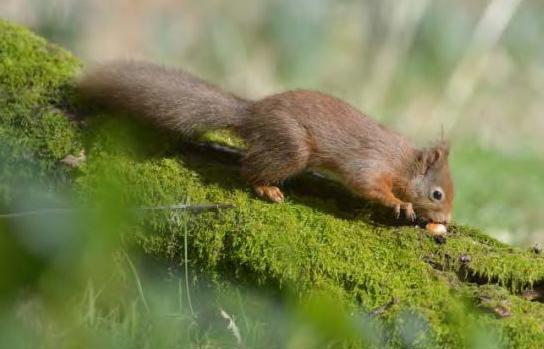
Ayrshire LBAP 2007 to 2010 revision
This was a revision of the Ayrshire LBAP 2001 to 2005 document following various changes that had taken place at a national level, including publication of the Scottish Biodiversity Strategy ‘Scotland’s Biodiversity, It’s in Your Hands’ (2004) and its 6 Implementation Plans (2005). The Nature Conservation (Scotland) Act 2004 had also been issued, which required production of the Scottish Biodiversity List (2005). This revision also incorporated conclusions from an assessment of the Ayrshire LBAP commissioned by the Ayrshire Biodiversity Group ‘Evaluation of the Effectiveness of Ayrshire LBAP 2001 to 2005’ (c.2006) to clarify how effective the process had been to date.
Ayrshire LBAP 2007 to 2012 update
This update of the Ayrshire LBAP 2007 to 2010 incorporated lessons learned from experience by the Ayrshire Biodiversity Group through implementing the plan together, and approaches taken by other LBAP partnerships. The Scottish Executive and SNH commissioned a study ‘Strategic Review of Local Biodiversity Action Partnerships in Scotland 2003 to 2008’ to assess the progress with LBAPs. This identified a series of similar shortcomings of the original LBAPs in failing to identify achievable actions, maintain momentum and refocus organisations’ own priorities.
As a result, the 2007 to 12 LBAP considered changes in the wider biodiversity context, focusing more on priorities and including SMART actions (an acronym for ‘specific, measurable, achievable, relevant and time-based’). Its content included work on priority species and habitats which were not already being acted on by the conservation-orientated organisations operating in Ayrshire. The LBAP became a working document allowing it to be updated regularly and to enable it to adjust to the progress towards the Plan’s targets. Specifically, the revised Action Plan was more flexible and had a reduced number of actions (two habitat action plans for lowland raised bogs and coastal habitats and two species action plans for water vole and farmland birds) to ensure that it only covered priorities and local actions.
Ayrshire LBAP 2012 to 2017 revision
This revision was prepared in 2012. This used a similar methodology to the 2007 LBAP with a slight adaptation to refocus the LBAP around an “ecosystem approach” and set out 2 new priority actions (record centre development; co-ordination and development) in addition to the 4 Ayrshire LBAP 2007-2012 actions of coastal habitats, lowland raised bogs, water voles and farmland birds.
North Ayrshire LBAP 2015 to 2018 revision
Preparation of a specific LBAP for North Ayrshire, as opposed to the pan Ayrshire approach taken to date, aimed to address both the Council’s statutory Biodiversity Duty and the Scottish Government’s Scottish Biodiversity Strategy document ‘2020 Challenge for Scotland’s Biodiversity’ (2013) in order to conserve and enhance biodiversity in North Ayrshire. This revision was based on the methodology and data underpinning the previous LBAPs, but with a North Ayrshire focus. Actions were specifically habitats-based rather than species based, in recognition that habitat protection and enhancement can in turn conserve and benefit species. As well as specific actions to improve coordination and monitoring, the LBAP provided scope for practical delivery on habitat projects targeted at coastal, river, farmland, forests and woodland, urban post-industrial sites, urban and rural path networks and urban greenspace.
Actions were specifically habitats-based rather than species-based, in recognition that habitat protection and enhancement can in turn conserve and benefit species.
A project-based approach aimed to optimise the impact of limited resources, for example through landscape scale conservation partnerships such as the ‘Garnock Valley Futurescape’ led by the Royal Society for the Protection of Birds. The consultation on the draft LBAP identified the opportunity to involve a wider range of stakeholders in the LBAP Partnership and to widen the focus of the Action Plan. Several potential partners were identified through this process to maximise opportunities which could benefit North Ayrshire’s biodiversity, with corresponding actions added to support this. It was envisaged that any future LBAP and Action Plan would be more aspirational as a result.
North Ayrshire LBAP 2019 to 2031 revision
In response to the Scottish Biodiversity Strategy document ‘Scotland’s Biodiversity a Route Map to 2020’ (2015), a ‘Workstreams’ approach has been taken, themed around the document’s six ‘Big Steps for Nature’ (Ecosystem restoration; Investment in natural capital; Quality greenspace for health and education benefits; Conserving wildlife in Scotland; Sustainable management of land and freshwater; Sustainable management of marine and coastal ecosystems). Within these, Ecosystem Groupings from the Scottish Biodiversity List (Coastal, Freshwater and Wetland, Lowland, Woodland, Upland and Marine) have been nested to enable relevant tasks for priority species and habitats to be incorporated easily into the relevant workstream.
As the Workstreams align with the Scottish Biodiversity Strategy, and therefore also with the Biodiversity Duty Reporting template produced by Scottish Natural Heritage, NALBAP 2019-20131 is structured in a way that provides focused, easily demonstrated success. A range of other policy and strategy documents have been incorporated including ‘Pollinator Strategy for Scotland 2017 to 2027’ (2016). While the national framework provides an appropriate structure for biodiversity action in North Ayrshire, it is important to recognise that biodiversity conservation began as a grass-roots movement, with amateur naturalists taking action to make a difference themselves. This continues to play a significant role in much of the work carried out to benefit biodiversity. As a result, the LBAP requires the ongoing input of local people with an interest in biodiversity.
An increase in the LBAP period to cover a 12-year period enables short-term, mid-term and long-term projects to be planned, fundraising to be carried out and relevant legacy work to be factored within the LBAP period. The 12-year period has been divided into 3-year reporting quarters to ensure that progress towards milestones is monitored and work programmes adjusted as required to ensure tasks are achieved within the life of the plan. NALBAP 2019 to 2031 will be a rolling document maintained as an online resource which will be shaped by input from local stakeholders during its implementation period.
As recommended by the original LBAP guidance ‘Local Biodiversity Action Plans – A Manual’ (1997), a ‘twin-tracking approach’ has been adopted in which a biodiversity audit has been recommended, with interim actions adopted in the meantime. A biodiversity audit is the only means of objectively prioritising which aspects of North Ayrshire’s biodiversity are in most urgent need of conservation action, and of monitoring progress towards relevant tasks within the LBAP. The biodiversity audit aims to produce baseline data for monitoring LBAP progress as well as local priority species and habitats lists. While implementing individual action plans for all species and habitats on these lists would not be feasible, the lists will be invaluable in giving clear, objective advice to internal and external partners and the public on species and habitats of conservation significance at both national and local scales. Provided that publicity of the LBAP has wide and sustained reach, these lists can therefore have wide-reaching impacts through stakeholder decision-making, development planning, public awareness, education and community projects.
The establishment of a Local Environmental Records Centre covering North Ayrshire (provided by South and West Scotland Information Centre) was a key success of the previous LBAP. This is an essential resource underpinning all aspects of NALBAP 2019 to 2031 for prioritising LBAP work, monitoring its impact, and assessing whether priorities need to change over time. Sustaining our LERC in the long term is therefore central to the success of NALBAP 2019 to 2031.
2030 vision and central aims
2030 vision for North Ayrshire's biodiversity
Through the implementation of NALBAP 2019 to 2031, North Ayrshire Biodiversity Partnership will work towards the following vision for North Ayrshire’s biodiversity by 2030:
- Ecosystem restoration - historical losses of habitats and ecosystems have been reversed, to meet the Aichi target of restoring 15% of degraded ecosystems
- Investment in natural capital - the benefits which nature provides are better understood and appreciated, leading to better management of our renewable and non-renewable natural assets;
- Quality greenspace for health and education benefits - the majority of people derive increased benefits from contact with nature where they live and work
- Conserving wildlife - the future of priority habitats and species has been secured
- Sustainable management of land and freshwater - environmental, social and economic elements are well balanced
- Sustainable management of marine and coastal ecosystems - a healthy balance has been achieved between environmental, social and economic elements.
It is proposed that the above vision, which is based on the Scottish Biodiversity Strategy’s ‘Six Big Steps for Nature’, will be developed by North Ayrshire Biodiversity Partnership to ensure that:
- the direction established by the work programmes section within this document is represented
- the aims and objectives of all three Scottish Biodiversity Strategy documents are incorporated
- issues applicable to the North Ayrshire context are incorporated, including relevant central aims of previous Ayrshire LBAPs, the Community Planning Partnerships and North Ayrshire Council documents including North Ayrshire Council Plan
- all points within the vision are sufficiently specific to be achievable.
Central aims
The essence of NALBAP 2019 to 2031 can be expressed as three central aims, based on those of the Scottish Biodiversity Strategy '2020 Challenge for Scotland’s Biodiversity' (2013):
- Protect and restore biodiversity on land and seas, and to support healthier ecosystems.
- Connect people with the natural world, for their health and well-being and to involve them more in decisions about their environment.
- Maximise the benefits for North Ayrshire of a diverse natural environment and the services it provides, contributing to sustainable economic growth.
Achieving our 2030 vision and central aims
Our work programme for 2019 to 2031
The work programme
This section outlines the work programme of prioritised biodiversity action which will be implemented through NALBAP 2019 to 2031 to address the key pressure affecting North Ayrshire's ecosystems, including habitats and species prioritised within the Scottish Biodiversity List. The structure of the work programme is explained below.
Workstreams
The Work Programme has been divided into six broad Workstreams corresponding to the ‘Six Big Steps for Biodiversity’ outlined in the 2015 Scottish Biodiversity Strategy document “Scotland’s Biodiversity – Route Map to 2020”.
These workstreams ensure that all NALBAP 2019 to 31 work aligns with the Scottish Natural Heritage template for biodiversity duty reporting, facilitating fulfilment of North Ayrshire Council’s biodiversity duty.
Themes
Within the workstreams, theme subsections address key biodiversity topics, and ensure that stakeholders can navigate easily to biodiversity work which relates to their field. A theme has also been created for each Ecosystem Grouping within the Scottish Biodiversity List, facilitating inclusion of new work relating to Scottish Biodiversity List species and habitats.
Tasks
Action for biodiversity identified within the Workstreams and Themes has been divided into defined Tasks. To align with the North Ayrshire Environmental Sustainability and Climate Change Strategy 2017 to 2020 (within which NALBAP 2019 to 2031 is nested), the following are defined for each task:
- reference number
- 'what will we do?' (action)
- 'who will do it?' (active partners)
- 'when will we do it by?' (timescale)
- 'why will we do it?' (justification of how the action contributes to strategic aims)
The 12-year period of this LBAP takes a long-term view to allow meaningful baseline data collection ahead of project work as required, longer term project work to be implemented and if necessary, collection of monitoring data following project work. To facilitate monitoring of LBAP progress and to enable adaptive management, the 12-year period will be divided into quarters, each lasting three years.
LBAP priority habitats and species
The following interim LBAP priority habitats and species for NALBAP 2019 to 31 have been based upon the Ayrshire LBAP 2007 to 2010 list. Whilst Grey Partridge and Corn Bunting are no longer thought to be breeding species in North Ayrshire, management practices to conserve farmland birds may enable future recolonisation.
Freshwater and wetland
- lowland raised bog
- coastal and flood plain grazing marsh
- water vole (Arvicola amphibius)
Lowland
Six farmland species:
- Skylark (Alauda arvensis)
- Corn Bunting (Emberiza calandra)
- Eurasian Tree Sparrow (Passer montanus)
- Grey Partridge (Perdix perdix)
- Reed Bunting (Emberiza schoeniclus)
- Common Linnet (Linaria cannabina)
Marine habitats
- saline lagoons
- intertidal mudflats
Coastal
- coastal vegetated shingle
- coastal salt marsh
- maritime cliffs and slopes
North Ayrshire Council’s Biodiversity Duty Reports are also published on a three-year cycle and will therefore serve as a progress report for the NALBAP 2019 to 2031 process.
A biodiversity audit will be carried out to create an itinerary of North Ayrshire’s biodiversity resource and how it is faring. This will allow future biodiversity work to be prioritised based on the local context of ecosystems, habitats and species and to target the key pressures impacting upon these. The information gathered by the biodiversity audit process will be maintained by South and West Scotland Environmental Information Centre and regularly updated as a live resource, allowing progress and impact of NALBAP 2019 to 31 Tasks to be monitored, and informing changes in priorities over time. The Work Programme is therefore composed of interim Tasks, selected from a longlist by North Ayrshire Biodiversity Partnership, which will be carried out whilst the biodiversity audit is being undertaken. Input from a wider range of stakeholders will be sought following publication of NALBAP 2019 to 2031 to ensure that key issues affecting locally valued biodiversity are addressed.
Not all of these LBAP priority habitats or species have an associated interim Task due to the selection process described above, but associated tasks will be developed by the North Ayrshire Biodiversity Partnership as appropriate. Whilst individual Action Plans have not been produced for these habitats and species due to the Convention of Biological Diversity’s (CBD) recommendation to shift towards an ecosystems approach, lists of habitats and species of local importance will be produced as an output of the biodiversity audit to inform the decisions and actions of a range of stakeholders.
The structure of NALBAP 2019 to 2031 provides the framework for a rolling work program. Tasks will be developed and progressed by North Ayrshire Biodiversity Partnership, and as tasks are completed, relevant new tasks may be added. Whilst many tasks will be completed within the life of this LBAP, others by their nature will be ongoing.
The combination of a structured set of interim tasks based on national strategy and partner input, followed by reprioritisation of tasks determined by an objective biodiversity audit and local input, will provide the basis for addressing the key issues for North Ayrshire’s biodiversity over the next 12 years.
Workstream 1: Ecosystem restoration
An ecosystem is a dynamic complex of plant, animal and micro-organism communities and their non-living environment interacting as a functional unit.
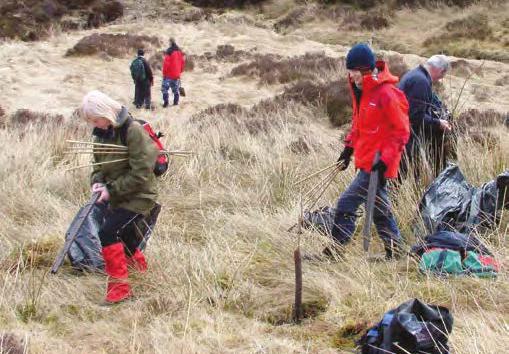
Workstream summary
Ecosystems are characterised by the connectivity between the atmosphere, the water cycle, the nutrient cycle, geology, soils and the biodiversity they support. The term ecosystem is not limited to any particular spatial unit or scale, so examples of ecosystems could include a grain of soil, a pond, a forest, a biome or the entire biosphere. With a growing understanding that wildlife requires habitat connectivity to move through our landscapes, ecosystem conservation is increasingly being carried out through partnership working at the landscape scale, such as river catchments. The biodiversity and functioning of many ecosystems have been degraded due to a wide range of cumulative human impacts, and biodiversity net gain is required if they are to continue to provide the range of ecosystem services which humans depend on.
The Convention on Biological Diversity encourages sustainable management of biodiversity through the ecosystem approach, which it defines as:
‘A strategy for the integrated management of land, water and living resources that promotes conservation and sustainable use in an equitable way. It is based on the application of appropriate scientific methodologies focused on levels of biological organisation which encompass the essential processes, functions and interactions among organisms and their environment. It recognises that humans, with their cultural diversity, are an integral component of ecosystems.’
Central to this approach is the recognition that we are a key part of ecosystems, and not separate from them. This understanding of our dependence on functioning ecosystems is mirrored in the central aim of part 1 of the Scottish Biodiversity Strategy “Scotland’s Biodiversity: It’s in Your Hands” (2004): ‘To conserve biodiversity for the health, enjoyment and well-being of the people of Scotland now and in the future.’
Relevance of this workstream to the Scottish Biodiversity Strategy
The title of this workstream refers to the first of 6 Big Steps for Nature set out in Scotland’s Biodiversity: A Route Map to 2020 (2015).
Ecosystem restoration
To reverse historical losses of habitats and ecosystems, to meet the Aichi target of restoring 15% of degraded ecosystems.
This in turn links to chapter 1 ‘Healthy ecosystems’ within the Scottish Biodiversity Strategy’s 2020 Challenge for Scotland’s Biodiversity (2013), outlined below:
Outcome
Scotland’s ecosystems are restored to good ecological health so that they provide robust ecosystem services and build our natural capital.
Key messages
- ensure we benefit from resilient ecosystems that continue to provide robust ecosystem services and natural capital for future generations
- use an adaptive, integrated approach at the ecosystem level, which is best managed at the spatial scale of river catchments
- restore and enhance ecosystems
- devise an effective means of assessing ecosystem health
- coordinate policies and action across Government and public bodies, and involve others including managers of land and sea and non-governmental bodies
Workstream 2: Investment in natural capital
Natural capital describes the social, environmental and economic benefits to humans provided by habitats and ecosystems.

Workstream summary
Examples of natural capital include water purification, food, carbon storage, flood prevention and the physical and mental benefits of experiencing nature. Many of these benefits are free, hard to measure and cannot be bought or sold. As a result, these benefits are sometimes overlooked during decision making or when assessing how well off we are as a society. Conversely, many of these benefits would either be economically unviable or even impossible to replace if ecosystems functioning is lost. For North Ayrshire’s natural capital to be sustainable in the long term, it must be integrated into decision-making across as many organisations as possible. Improving our understanding of natural capital, raising awareness of its value and investing in aspects of our environment that until now we have taken for granted are key to ensuring that our ecosystems will continue to provide these benefits.
Relevance of this workstream to the Scottish Biodiversity Strategy
The title of this Workstream refers to the second of 6 Big Steps for Nature set out in Scotland’s Biodiversity: A Route Map to 2020 (2015):
Investment in natural capital
To ensure the benefits which nature provides are better understood and appreciated, leading to better management of our renewable and non- renewable natural assets.
This in turn links to chapter 2 ‘Natural capital’ within the Scottish Biodiversity Strategy’s 2020 Challenge for Scotland’s Biodiversity (2013), outlined below:
Outcome
Natural resources contribute to stronger sustainable growth in Scotland, and we increase our natural capital to pass on to the next generation.
Key messages
- nature supports Scotland’s prosperity in ways that are not always visible, but the value is real.
- Scotland should make the most of its natural assets to support sustainable economic growth.
- the economy and wider wellbeing of Scotland’s people will benefit from action that enhances nature and ecosystem services
Themes within this workstream
- Implementing Action – Resourcing, Management and Monitoring of the LBAP (Tasks 2.1 and 2.2).
- People and Communications (Tasks 2.3 and 2.4).
- Integrating the LBAP into best practice (Tasks 2.5 and 2.6).
Workstream 3: Quality greenspace for health and educational benefits
Greenspace is any vegetated land or water in an urban area, and includes publicly accessible open spaces such as woods, parks, allotments, gardens, playing fields, children’s play areas and cemeteries; green corridors such as paths, disused railway lines, rivers and canals; and even vacant, derelict and contaminated land which has the potential to be transformed.
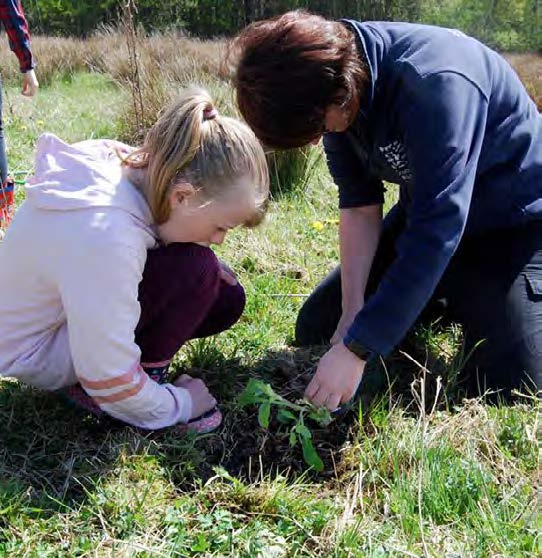
Workstream summary
Good quality greenspace in this context provides a range of benefits to people and wildlife. For people this includes opportunities for anybody to exercise whilst experiencing nature, to participate in outdoor learning about wildlife and habitats near where they live, and to understand how the natural world changes with the seasons through daily interactions with a range of resident and migratory species. The benefits to human health and well-being from regular interactions with greenspace are well documented. For wildlife this includes provision of a variety of habitats which allow movement through the landscape, sources of food and water, and suitable conditions for reproducing. With the ongoing expansion of urban areas and impact of climate change on the distribution of wildlife across Scotland, the quality of greenspace as steppingstones of habitat for wildlife will become increasingly important.
Key messages
- Scotland’s nature and landscapes are key assets for public health and wellbeing and more should be done to use the natural world to help improve the quality of our lives
- there is a strong case for investing more in nature close to where people live, work, or go to school as this can improve public health and reduce pressure on health budgets in the longer term
- sustained investment in good-practice demonstration projects is required if we are to realise the longer-term improvements in physical activity and mental health
- investment in the availability of good quality greenspace in and around schools and other centres for learning will improve educational outcomes
- all organisations with responsibility for biodiversity must work towards bringing this into their mainstream policies and practices
Relevance of this workstream to the Scottish Biodiversity Strategy
The title of this Workstream refers to the second of 6 Big Steps for Nature set out in Scotland’s Biodiversity: A Route Map to 2020 (2015):
Quality greenspace for health and education benefits
To ensure that the majority of people derive increased benefits from contact with nature where they live and work.’
This in turn links to chapter 3 ‘Biodiversity, health and quality of life’ within the Scottish Biodiversity Strategy’s 2020 Challenge for Scotland’s Biodiversity (2013), outlined below:
Outcome
Improved health and quality of life for the people of Scotland, through investment in the care of greenspace, nature and landscapes.
Workstream 4: Conserving wildlife in Scotland
Scotland is a stronghold for a range of species, such as the Hen Harrier, which are faring badly in the rest of the UK. Despite this, the populations and ranges of many of our species and habitats, including some which were previously widespread and common, are in decline.
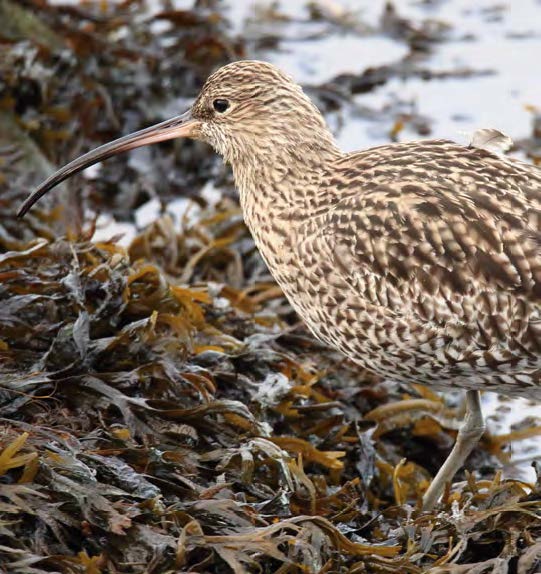
Workstream summary
Whilst the trend is increasingly towards conservation at the landscape scale based on the ecosystem approach, protected areas such as Local Nature Conservation Sites, Local Nature Reserves, Sites of Special Scientific Interest and Special Protection Areas continue to form a vital network which manages and conserves some of the best examples of our natural and seminatural habitats, providing the conditions needed by a range of our specialist species. Ensuring that protected areas are under appropriate management and bringing vulnerable sites under protection is key to strengthening this network in the face of increasing cumulative human impacts, for example mitigating against the effects of climate change in coastal habitats. In order to effectively conserve our wildlife, an audit of North Ayrshire’s biodiversity is needed as an objective assessment to prioritise which ecosystems are most in need of conservation, to bring multiple benefits to a range of habitats and species, including people.
Key messages
- protected areas offer many benefits beyond caring for nature, and provide enhanced ecosystem services, create jobs (especially in rural Scotland) extend recreational opportunities (which benefit health and well-being), and contribute to tourism and our quality of life
- an integrated, adaptive approach to the management of protected places, involving the range of land-use interests, will enhance these benefits
- more concentrated work is needed on key species and habitats to target threatened native species, species conflicts, invasive non-native species, and potential reintroductions.
Themes within this workstream
- The continuing importance of designated sites (Tasks 4.1 and 4.2)
- Biodiversity audit for North Ayrshire (Tasks 4.3 and 4.4)
Relevance of this workstream to the Scottish Biodiversity Strategy
The title of this Workstream refers to the fourth of 6 Big Steps for Nature set out in Scotland’s Biodiversity: A Route Map to 2020 (2015):
Conserving wildlife in Scotland
To secure the future of priority habitats and species. This in turn links to chapter 4 ‘Wildlife, habitats and protected places’ within the Scottish Biodiversity Strategy’s 2020 Challenge for Scotland’s Biodiversity (2013), outlined below:
Outcome
The special value and international importance of Scotland’s nature and geodiversity is assured, wildlife is faring well, and we have a highly effective network of protected places.
Workstream 5: Sustainable management of land and freshwater
Sustainable management of our lowland, upland, woodland and freshwater ecosystems involves balancing human economic and leisure activities, many of which depend on ecosystem services, with the needs of wildlife and species to ensure that ecosystems can continue to function for the benefit of all.

Workstream summary
From creating mosaics of habitat at the boundaries between managed woodland and moorland to enable Black Grouse to survive and thrive, to re-meandering and naturalising river channels to benefit aquatic communities whilst reducing flood risk, the ecosystem approach can enable a wide range of species to thrive alongside human activity.
Relevance of this workstream to the Scottish Biodiversity Strategy
The title of this Workstream refers to the fifth of 6 Big Steps for Nature set out in Scotland’s Biodiversity: A Route Map to 2020 (2015):
Sustainable management of land and freshwater
To ensure that environmental, social and economic elements are well balanced. This in turn links to chapter 5 ‘Land and freshwater management’ within the Scottish Biodiversity Strategy’s 2020 Challenge for Scotland’s Biodiversity (2013), outlined below:
Outcome
Nature is faring well, and ecosystems are resilient as a result of sustainable land and water management.
Key messages:
- ‘Land managers, public bodies and communities need to work together to address the challenges facing biodiversity
- support and incentives for managing biodiversity need to be better targeted
- river basin planning should become the basis of a more integrated approach to land and water management across whole catchments
- woodland expansion and habitat restoration will benefit biodiversity while serving important social and economic objectives, such as flood risk management and contributing to a low carbon economy
- more effort is needed to manage arable land in a way that will benefit soil biodiversity and wildlife
- land and water managers need to be more aware of the important role nature plays in their business
Themes within this workstream
- Freshwater and wetland (Tasks 5.1 and 5.2).
- Lowland (Tasks 5.3 and 5.4).
- Woodland (Tasks 5.5 and 5.6).
- Upland (Tasks 5.7 and 5.8).
Workstream 6: Sustainable management of marine and coastal ecosystems
As with terrestrial habitats, coastal and marine ecosystems are subject to a wide range of economic and leisure activities which have the potential to damage ecosystems. Monitoring of these ecosystems can be challenging, although the availability of marine habitat data is improving.
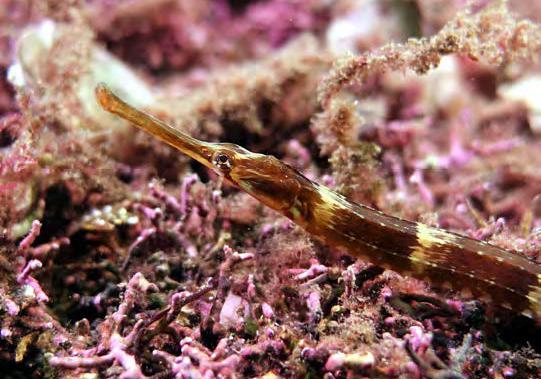
Workstream summary
The establishment and management of a network of Marine Protected Areas has been an important step in recognising the conservation value of marine habitats, but more work is needed to ensure that developments are subject to planning processes equivalent to those on land to ensure that developments and other activities are carried out appropriately. The Clyde Marine Planning Partnership is addressing such issues through the creation of the Clyde Regional Marine Plan, while organisations such as Community of Arran Seabed Trust and Clyde Porpoise Community Interest Company campaign for and conduct research into our marine biodiversity. Shoreline Management Plans can play a role in the conservation and enhancement of coastal ecosystems, relying on engagement with a range of stakeholders in North Ayrshire’s biodiversity, whilst local community groups such as FRIENDS carry out a range of coastal habitat creation and management projects.
Key messages
- Scotland’s seas and coasts provide rich natural harvests and varied ecosystem services, including climate control, coastal protection, nutrient recycling, health benefits and leisure opportunities, as well as supporting a diverse biodiversity that adds value to local tourist economies
- sustainable management of the seas to deliver multiple benefits will be assured through implementation of A Strategy for Marine Nature Conservation in Scotland’s Seas and Scotland’s National Marine Plan
- management of the coastal zone will be increasingly challenged by the impacts of climate change
- Scotland’s islands are especially valuable, but vulnerable, havens of biodiversity
Themes within this workstream
- Marine habitats (Tasks 6.1 and 6.2)
- Coastal habitats (Tasks 6.3 and 6.4)
Relevance of this workstream to the Scottish Biodiversity Strategy
The title of this Workstream refers to the second of 6 Big Steps for Nature set out in Scotland’s Biodiversity: A Route Map to 2020 (2015):
Sustainable management of marine and coastal ecosystems.
To secure a healthy balance between environmental, social and economic elements.
This in turn links to chapter 6 ‘Marine and coastal’ within the Scottish Biodiversity Strategy’s 2020 Challenge for Scotland’s Biodiversity (2013), outlined below:
Outcome
Scotland’s marine and coastal environments are clean, healthy, safe, productive and biologically diverse, meeting the long-term needs of people and nature.
Quick guide to terms used in this document
List of abbreviations
- ABG Ayrshire Biodiversity Group
- AJPU Ayrshire Joint Planning Unit
- ART Ayrshire Rivers Trust
- BAP Biodiversity Action Plan
- CBD Convention on Biological Diversity
- CMMP Clyde Marine Mammal Project
- CMPP Clyde Marine Planning Partnership
- CPCIC Clyde Porpoise Community Interest Company
- COAST Community of Arran Seabed Trust
- CPP Community Planning Partnerships
- FCS Forestry Commission Scotland FRIENDS Ardeer FRIENDS Group (Stevenston Conservation)
- GCLPS Garnock Connections Landscape Partnership Scheme
- HAP Habitat Action Plan
- IGNN Irvine to Girvan Nectar Network
- LBAP Local Biodiversity Action Plan
- NALBAP North Ayrshire Local Biodiversity 2019-2031 Action Plan 2019-2031
- LERC Local Environmental Records Centre
- LNCS Local Nature Conservation Site
- LNR Local Nature Reserve
- MPA Marine Protected Area
- NABP North Ayrshire Biodiversity Partnership
- NAC North Ayrshire Council
- RSPB Royal Society for the Protection of Birds Scotland
- SBL Scottish Biodiversity List
- SBS Scottish Biodiversity Strategy
- SEPA Scottish Environmental Protection Agency
- SF Scottish Forestry
- SNH Scottish Natural Heritage
- SWT Scottish Wildlife Trust
- SMP Shoreline Management Plan
- SSSI Site of Special Scientific Interest
- SWSEIC South and West Scotland Environmental Information Centre
- SAC Special Area of Conservation
- SPA Special Protection Area
- SAP Species Action Plan
- SGG Strathclyde Geodiversity Group
- UKBAP UK Biodiversity Action Plan (Biodiversity – the UK Action Plan)
Thank you to the individuals and organisations who have contributed images to this document to help illustrate the fascinating biodiversity we have here in North Ayrshire.
 Translate
Translate